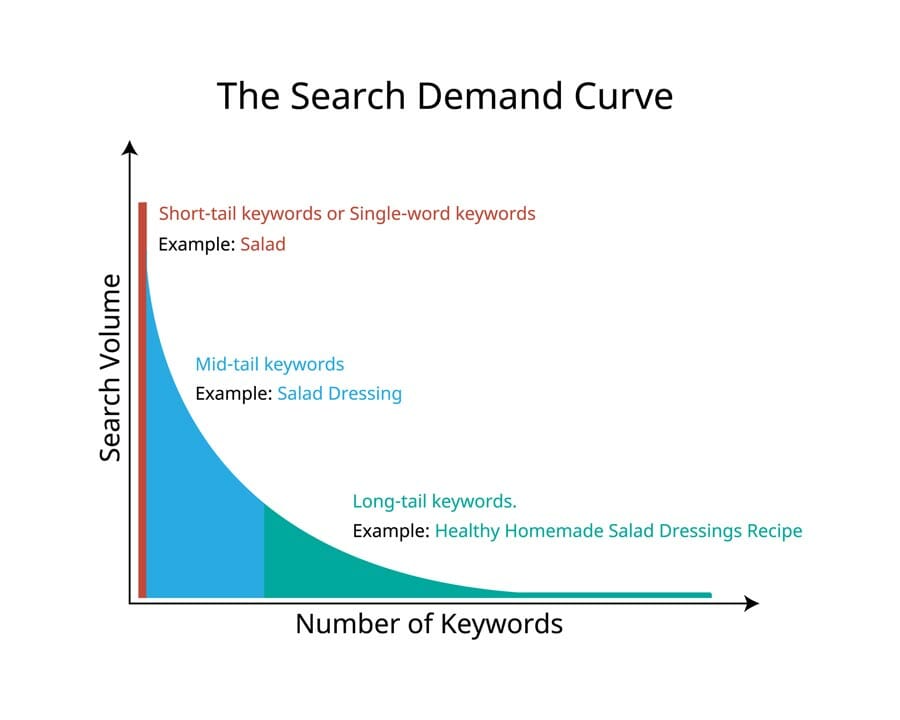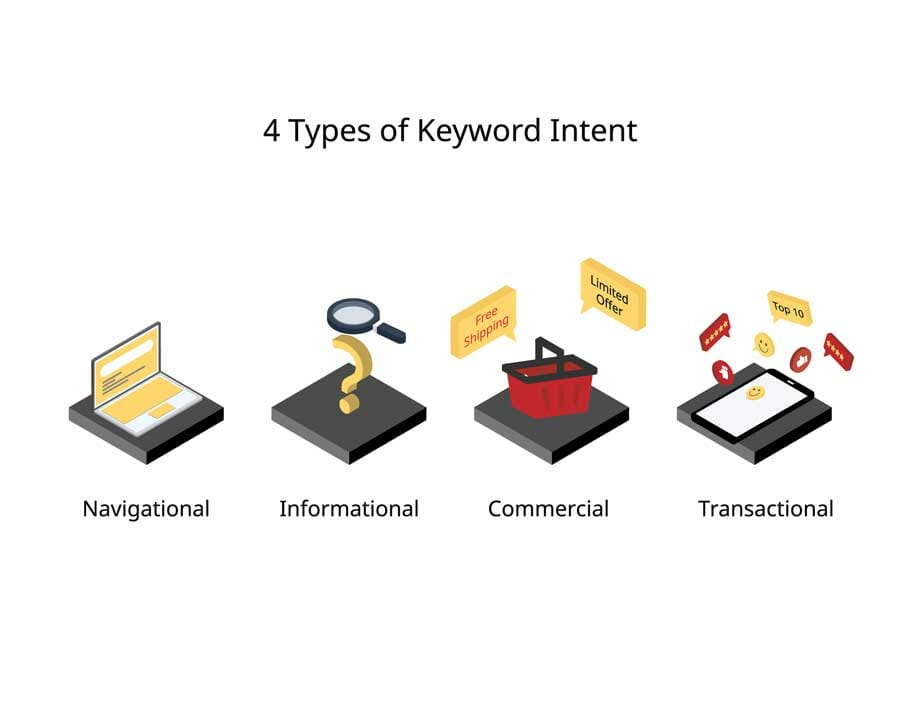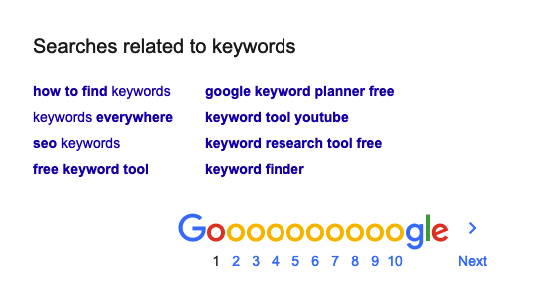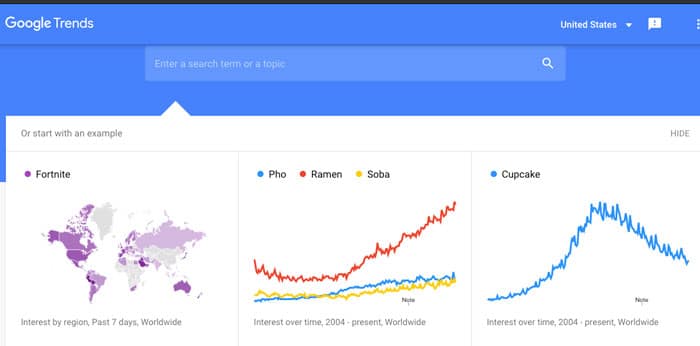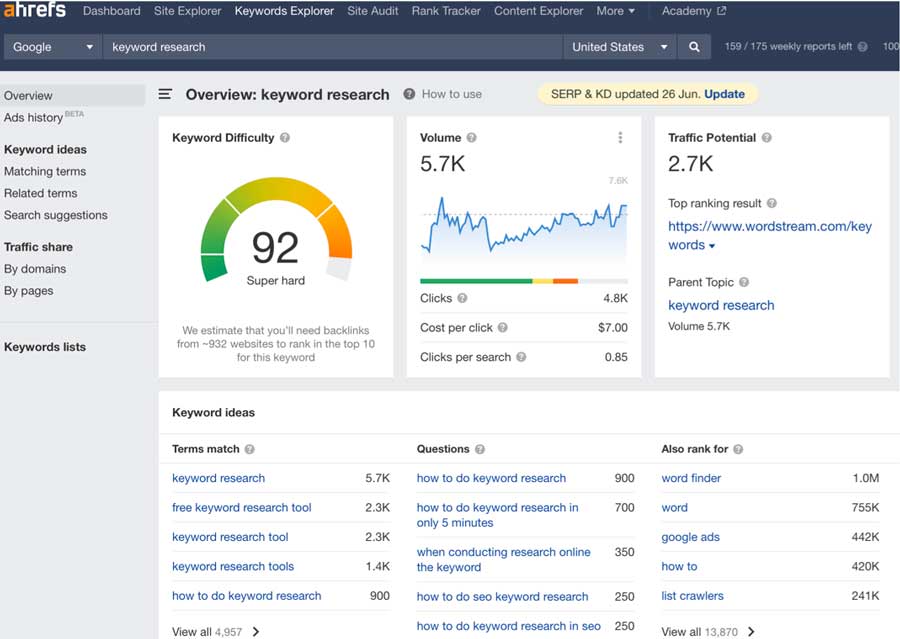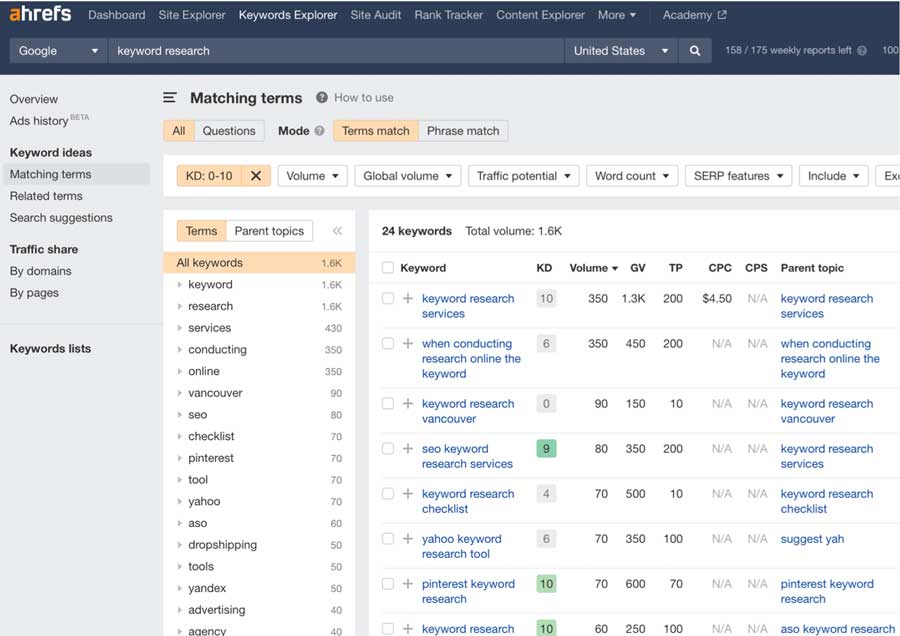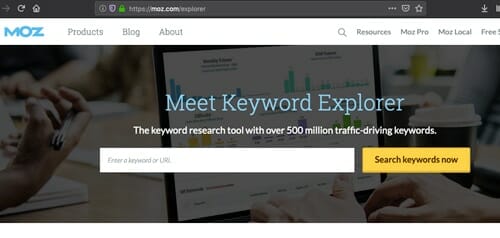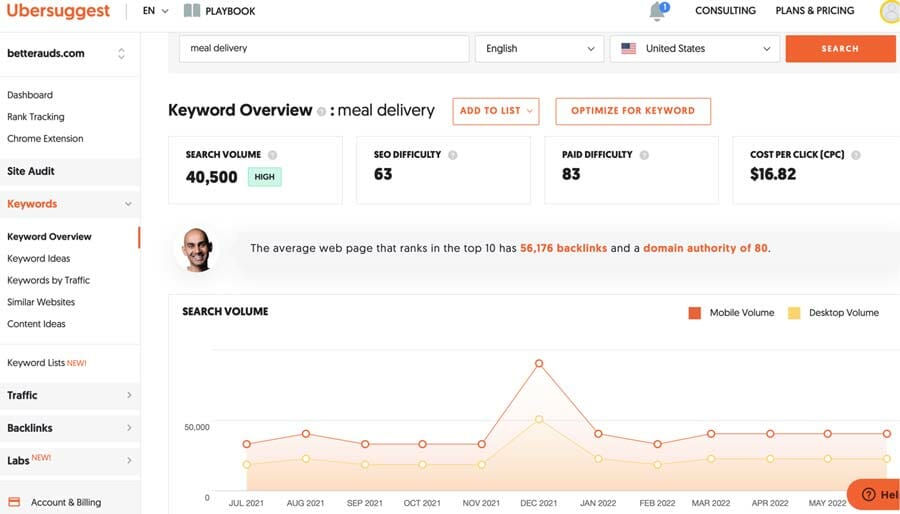If slabs are the foundation of a house, keyword research is that of SEO strategy. Whether it is marketing content, digital or social media, it is a critical component.
Ironically, a lot of site owners, as well as content writers, do not prioritize it. But in reality, if you are serious about increasing traffic to your website, keeping your site relevant, and improving your business, periodic keyword research is a must.
In this detailed guide, we will take you through all the elements of keyword research. We are covering the below topics in this article:
-
Keyword research – What is it and why is it important?
-
Different Types of Keyword Research
-
2.1 Short Tail, Mid Tail and Long Tail Keywords
-
2.2 Keywords Intent
-
2.3. Type of keywords based on user intent
-
-
11 different ways to do keyword research
-
Characteristics that determine successful keyword research
1. Keyword research – What is it and why is it important?
It is basically figuring out and tracking down the words, terms, list of words, and phrases that are used to search for relevant content. These words and terms are ultimately aimed to optimize the content and determine the category of your site.
It is typically performed before you start writing the content itself. After you have the list ready, you will proceed to write, structure your website according to it. You will also make a decision about tracking and Analysis based on the list of the keywords. This is called keyword strategy.
What is the importance of Keyword Research?
To put it bluntly, without keyword research, why bother with SEO at all? It is the foundation upon which every digital marketer builds his or her business. It is one of the absolute first steps of Internet marketing. With all the fuss surrounding keyword research, surely you would like to know its importance and benefits.
1. Lock in on your audience
With keyword research, you can generate authoritative, relevant, and engaging content. It keeps your current audience interested while quickly attracting new ones.
2. Attract the right kind of traffic.
Of course, you want traffic. But there is a difference between traffic that generates leads and one which doesn’t.
This reminds me of an interesting incident I had a few years back. I met a prospect regarding their digital marketing needs. The company CEO told me that digital marketing does not work. I was surprised as to how can someone have such an absurd viewpoint about it. On further questioning, he mentioned that he was using an SEO agency that were taking payments from them but the prospect was not getting any results. He shared with me a report where in he was getting traffic but the bounce rate was very high. On further checking their Google Analytics, I found out that the traffic was coming from completely non relevant sources because of the backlinks created by their seo agency. That is when I explained to him the importance of having relevant traffic.
What’s the point of having hundreds or thousands of visitors on your website if they are not interested in what you have to offer?
When you perform keyword research periodically, and create content according to the needs of your users, you will witness a rise in traffic that results in conversions. This will drive sales or leads, which is what you want.
3. Rank higher and beat the competition
A direct result of high traffic is awareness about the brand and rise in your SERP (Search Engine result pages) rankings. When you surge in rankings, it establishes trust and reliability among your customers. New clients will also start seeing that your site is more trustworthy than others in the same business.
As your rankings improve, you will also be able to fight off competitors more easily. Creating relevant content by doing effective Keyword research makes your site more unique and organic, which other websites will not be able to replicate.
4. Create content that your audience enjoys
Because you can gauge what exactly your audience wants, you can create content that they actually enjoy reading. Internet is a platform where people’s attention span is shorter than a toddler’s. But when the content is good in quality, they can relate to it, find useful information and will be convinced to make a purchase. You would not have to make any persuasive statements to sell your stuff. Let your content do the talking and convincing.
5. Take your business to new heights.
With higher rankings and awareness surrounding your brand and business, is it any surprise that your business takes on a new path. Of course, the conversions are also to be counted as they generate revenue. When you have a steady audience, it is easy for the new potential ones to come as well.
When your site is structured well with keyword research, it also saves you a lot of time on maintenance and other research activity. You can use this time to invest in different avenues, which will ultimately prosper your business.
Now, Let’s look at different types of Keywords.
Different types of keywords:
In this section, we will talk about:
- Keywords – Understanding the Basics
- 3 Major Types of Keywords – Short Tail, Mid Tail and Long Tail Keywords
- 4 Types of Keyword Intent
- Type of keywords based on user intent
Keywords – Understanding the Basics
Keywords have a value parameter which include:
- Keyword Intent
- Search volume
- Keyword trends
- Cost per click or CPC
- Competition
Keyword Intent
Keyword intent means the intent of a user behind doing the keyword research. If keyword research is the foundation of your content, keyword intent is the reason why you are building the content. It defines the reason why your visitors come to your page. Many experts believe that keyword intent is the principal component of keyword research.
Therefore, understanding the keyword intent allows you to cater to the needs of the customers more precisely.
What is Search Volume?
The number of times a specific keyword is searched per month on Google is called the search volume. It is a critical component while building your keyword.
Keyword trends
At different points in time, different keywords may be trending on search engines. For example, a keyword related to a holiday such as halloween can be trending near the date of Halloween each year. There can be fluctuations in keyword trends depending upon a lot of factors. Keywords that are not trendy will eventually die and take your business with it if you are dependent upon only those keywords.
With keyword research, you will not only conduct manual researches but use advanced tools to watch the trends. This will keep you on top of your toes regarding the latest trends. If you do this frequently, then it shall help you stay ahead of the competition.
Cost per click or CPC.
It is the revenue that is generated per click and is what keeps a business running. Keywords that are in buy now category have the highest CPC while informational keywords have the highest. It does not depend on a high or low search volume but rather on the relevance between the keyword and the product.
Competition from the advertisers.
Three levels indicate competition between the advertisers. In Google’s keyword planner, it shows as high, medium, and low. Buy now keywords typically are marked high, which means advertisers compete to pay for their ads to be on those pages which have these keywords.
When you start with the keyword research, it is essential to know that they are meant for human readers who will ultimately be your customers. Conversions should be the supreme goal of any optimization.
3 Major Types of Keywords – Short Tail, Mid Tail and Long Tail Keywords
There are three common types of keywords. You need to understand the customer purchase life cycle and decide which type of keywords you need to use for your website based on your target customer’s needs.
For example: If you have a reviews based website, then you would need to use keywords which talk about reviews of different products that your customers might be interested in.
The Search Demand Curve
The different type of keywords are:
1. Short tail keywords or head terms.
Keywords that contain one or two words are called short-tail keywords. They have a reputation for being very general and universal and therefore, have the highest competition. Short tail keywords or head terms have the highest search volumes while long-tail keywords have the lowest.
Pros.
· The traffic generated by these types of keywords is excellent.
· The number of clicks triggered is usually higher than in the other two.
Cons.
· The general nature keeps the competition very high.
· Since these are talking about a topic in general, they do not satisfy the user intent of purchase or lead generation. Therefore, The rate of conversions is low.
2. Medium tail keywords or body terms.
These types of keywords have up to four words but not more. They strike the right balance between the other two in terms of difficulty as well as performance.
Pros.
· The traffic generated by these compared to long tail keywords is higher.
. They can satisfy a user’s search query
Cons.
· Very easy to be confused with long-tailed keywords.
3. Long-tailed keywords.
These keywords have five words or more. Using them in your content makes them rank higher than their competitors.
Pros.
· Higher rankings are easily achieved with long-tailed keywords.
· They have more niche and are, therefore, more relevant than the other two.
· The rate of conversion is higher.
Cons.
· You need a lot of content with long tail keywords to be able to get a lot of visitors.
2. 4 Types of Keyword intent
There are four common types of keyword intent.
A. Informational intent
Users who use this type of intent are typically looking for specific information regarding a product or a service. They are not immediate buyers but can usually be converted into one. However, these visitors can be the right audience to exert your expertise in the related field. They generally use how to, the best way to, and why among others, during their searches.
B. Navigational intent
These are a group of visitors who know what they are looking for. They simply input the word or a phrase in the web browser and head straight to a webpage or a site. They are also the easiest to convert to buyers. So, you must have the most relevant content on your website.
C. Commercial intent
Also known as high intent, these are typically performed by those who are interested in making a purchase. They have the highest conversion rates. They most commonly use the terms where to buy, free shipping, best deals, and others related to buying.
D. Transactional intent
Visitors who are doing further research before buying a product or learning more about it are in this category. They also rank high among the possible buyers, provided the content is high-quality, and your products have the most relevance.
If you have an ecommerce website, then you need to focus on buying intent keywords
Example: buy men tshirts.
By this stage, we shall assume that you have a good idea about the keyword research, so identifying crucial aspects of the intent should be easy. If you have a good grasp and understanding of the intent, you will be serving precisely what your visitors are looking for. If your content is relevant, Google will have no problem handling your site on a platter to your visitors.
With this in mind, constructing high-quality and relevant content should be an effortless task for you.
3. Type of keywords based on user intent
Knowing which keywords from your list have high-value is a must. As we have discussed the three major types of keywords above (Long Tail, Mid Tail and Short Tail), you have some idea about it. Apart from them, there are some other categories that are based on intent type of the keywords. These actually depend upon which stage a customer is during its online journey. Here is the link if you want to check customer purchase life cycle.
1. Buy now keywords
This shows that the searcher means to buy a product or a service. They have the highest search volume as well as the CPC. Keywords in this category include:
- Buy
- Cheap
- Deal/deals
- Discount
- Shipping
2. Informational keywords
Used when people need information about something on the internet. They have good search volume. Keywords in this category include:
- What is
- How to
- Where is/to
- Best way to
3. Product relevant keywords
Product-specific keywords, they have average value but a good search volume and CPC. Keywords used by visitors in this category include:
- Price of (specific product)
- Best
- Reviews
11 different ways to do keyword research
After having understood the type of keywords, it is now time to start generating the keywords. This is because the keyword research dictates your entire content’s journey. Here are different keyword generating tips to get you started.
- Make a list or the specific product or service that you offer.
- Write down all the topics that come close to your service or product of your site.
- A smart way is to imagine yourself as the target customer. This will help you get a mindset of the searcher on the other end.
Now you can start digging the keywords.
I am mentioning 6 Free tools and 5 paid tools below to do keyword research.
FREE Tools to do Keyword Research
1. Start with Google suggest.
You can see in above example, As soon as I typed something in google search engine, it starts showing me suggestions related to my keyword. As the primary web browser and the search giant that determines the ranking factors, you can be sure that Google can help you with right suggestions for keywords. When you type in a word, Google Suggest will throw up several words. You can gauge the popularity of the keyword-based on the suggestions and incorporate them into your keyword research arsenal. Google is not known for giving search data on a platter, but the Suggest feature is a pretty good deal.
2. Use ‘Searches Related to.’
In the same example as above, you would see searches related to your keyword on the google search results page.
Searches related to your current search are displayed at the bottom of your search on Google. Typically 8 of the most relevant keywords related to your searches will show up. Consider this as a direct recommendation from Google’s search algorithm. You can bet your bottom dollar that this list is popular with the customers you are targeting, so be smart and add them to your list.
3. Go to Wikipedia – Table of Contents.
Yes, it is not the only place to find extensive coverage on a specific topic. A lesser-known place where you will find unique keywords related to your content is Wikipedia. Here, you need to scrutinize the table of contents with a critical eye. You will come across certain words that are unique. And of course, everyone knows that less common terms (long tail keywords) can trigger higher rankings.
4. Answerthepublic
Answerthepublic.com website does not give you number of searches related with each keyword suggestion. But it gives you questions related to your keyword. You can use those questions while creating your content based on the keywords.
For example, when I typed the word keyword on its website, it came with below suggestions. The suggestions can also be seen in tabular format:
5. Google Trends
Trends are not limited to fashion anymore. Keywords also are significantly affected by trends. Keywords that are in the running remain while those which are not trending anymore die.
You can check and see whether your keyword is on trend or not by using Google Trends. Analyzing this will give you an idea about which keywords to nurture and optimize and which ones to abandon.
6. Google Keyword Planner in Google Adwords
As the godfather of search engines, Google’s Keyword Planner is an excellent tool to find exact keywords.
All you need is an account with Google Adwords. With features such as Filter and Sort, it is reliable, easy to use, and completely free.
PAID Tools to do Keyword Research
6. Ahrefs
Ahrefs is a paid tool that gives great insights for doing keywords research. I personally love using Ahrefs for doing my research.
Ahrefs gives all kinds of metrics you require for doing your keywords research. It shows the Keyword difficulty , through which you can identify if you need a lot of backlinks to that particular post url to rank for that particular keyword.
You can even sort by low Keyword difficulty, or volume by clicking on Keyword ideas on the left.
Here is an example of Keyword difficulty between 0 to 10:
7. SEMrush.
When you type in the keyword in SEMrush, it shows you all the websites related to it as well as their ranks. This is a pretty cool feature since you can take a peek into all your competitors’ websites and their performance. This is what makes the tool a favorite for those concerned with SEO.
This feature allows you to have a taste of what is pushing the rankings of other site owners. In turn, you can up your game with keyword research and optimization.
8. MOZ Keyword Explorer
The most outstanding feature of this tool is the keyword potential and keyword opportunity.
The potential feature considers the potential of your keyword and whether you should focus on it or proceed to something else.
The opportunity feature shows you the projected click-through rate of your keyword and how likely visitors will click on it. The tool is also a favorite for optimization.
10. Keywordtool.io
It is a superb tool that also works in conjunction with Google Suggest. But unlike its counterparts, when you input a keyword in Keywordtool.io, the search results congregate from around Bing, YouTube, Amazon, Google’s app store as well as eBay.
11. UberSuggest
This tool by Neil Patel also gives you a lot of options for doing keyword research. Here is an example of the keyword: meal delivery while searching for the keyword in Ubersuggest.
Characteristics that determine successful keyword research
After you have made a list of the keywords you think are essential, do you use them all? It will depend on:
- The length of your content.
- The density of the keywords.
But remember that content is primarily for people and not crawler bots. A post or an article that is stuffed with keywords will trigger the search engines to render it low-quality.
So what are the characteristics that define successful keyword research? Let’s find out.
1. Scout for terms that your users are searching for
By this, we mean scouting out your audience, probable terms that they may use and gauging the competition. This is especially vital in the stages of creating your seed list.
Forums, groups, and comments related to your service or product is an excellent place to start searching. Visitors and customers typically voice their concerns on these platforms, and you can use it to harness some unique keywords.
Another way to advance your research is by using tools like Google trends to have an idea about the trending keywords. As highlighted above, keywords are profoundly affected by trends, so you don’t want to start with a redundant keyword. That would be like going to a battle without the weapons.
2. Filter and refine your list
It is not uncommon to end up with more than a thousand keywords for one article or a product. But you cannot possibly use all of them in your work. You need to make sure that the ones you do incorporate in your site are relevant, less competitive, and will generate leads.
Keep the selected keywords as close to the service or product as possible. If you can recall what we mentioned above regarding the CPC, those keywords which are in the buy now and product-related should have more focus.
By now, you should have concluded that conversions are more important than anything else that surrounds keyword research. Refining your final keyword list takes practice and patience, but if you did not have an ounce of it, you would not have come this far. With a critical eye, you should be able to decide which are the keywords that will improve your ratings as well as your business.
Conclusion
Evaluating the performance of SEO becomes extremely easy when you perform keyword research frequently. It will be so effortless to provide your target audience what they want. Through keyword research, you will also identify the loopholes in the foundation of content on your website. You can fix these issues and make your content more relevant to your users.
As with any task, you become better at keyword research with practice. I hope you have been able to brush up on your skills with this comprehensive guide on keyword research. I wish you all the best in your journey of online marketing.
This post was proofread with Grammarly. If you liked this post, please share it with your friends on Social Media.









